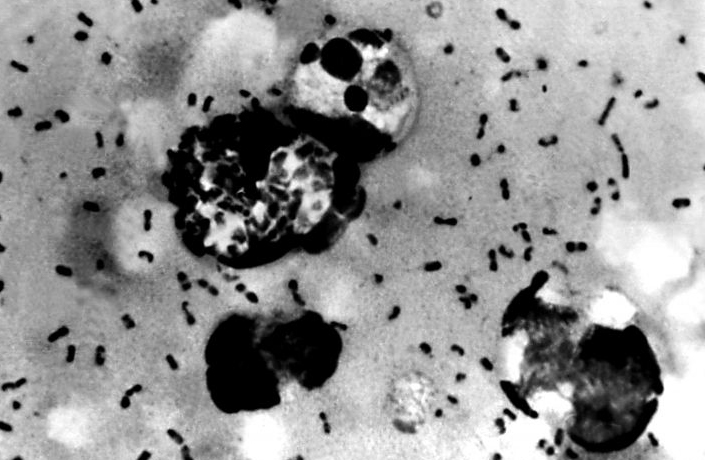Bubonic Plague Appears In United States, The Black Death Is Back
This appearance of the Bubonic Plague comes after four other cases that were reported last November in the same Inner Mongolia region.
This article is more than 2 years old

As if we don’t have enough to worry about in 2020, the Bubonic plague has been found in the United States. This comes shortly on the heels of authorities from a city within China’s Inner Mongolia region issuing warnings about a reappearance of The Black Death, also known as the Bubonic Plague, there.
BUBONIC PLAGUE IN THE UNITED STATES
So far the Bubonic Plague has not been found in humans in the USA, but it has been found in an animal. Morrison, Colorado health officials reported on Saturday, July 11, 2020 that they’d detected bubonic plague in a squirrel.
The statement issued by Jefferson County, CO on the discovery reads this way…
“On Saturday, July 11, 2020, a squirrel found in the Town of Morrison tested positive for bubonic plague. Plague is an infectious disease caused by the bacteria Yersinia pestis, and can be contracted by humans and household animals if proper precautions are not taken.”
Humans can contract plague through a cough from an infected animal, through the bite of a flea, or by direct contact with tissue or fluid from an infected animal. Transmission by flea is particularly worrisome, given that it’s summer and peak flea season in much of the United States.
The county is recommending the following precautions for its residents:
- Eliminate all sources of food, shelter and access for wild animals around the home.
- Do not feed wild animals.
- Maintain a litter and trash-free yard to reduce wild animal habitats.
- People and pets should avoid contact with sick or dead wild animals and rodents.
- Use precaution when handling sick pets. Have sick pets examined by a veterinarian.
- Consult with your veterinarian about flea and tick control for your pets.
- Keep pets from roaming freely outside the home where they may prey on wild animals and bring the disease home with them.
THE BLACK DEATH

For those of you not up on your plague history, the Bubonic Plague, which was called the “Black Death” in the Middle Ages, killed an estimated 75-200 million people throughout Asia, Europe, and Africa. This estimate includes killing anywhere from 30-60% of Europe’s entire population.
The disease, caused by the bacterium Yersinia pestis, is transmitted by fleas and in its bubonic form, cannot be transmitted from person-to-person. It originated from Central or East Asia when it hit in the Middle Ages and the infected fleas were carried by black rats on merchant ships throughout the Mediterranean Basin, reaching Western Asia, Africa, and the remainder of Europe. The spread, once it came ashore, was from human fleas, which cause the Pneumonic Plague. This Pneumonic Plague, unlike the Bubonic, can be spread via person-to-person contact through the air. For this reason, the spread of plague in the Middle Ages was quick.
There are three types of known plague. The aforementioned bubonic and pneumonic and the third called septicemic. This latter version is a plague that is a life-threatening blood infection also spread by the bite of a flea.
CHINA’S BUBONIC PLAGUE

An Inner Mongolian hospital reported the case in China. This appearance of the Bubonic Plague comes after four other cases that were reported last November in the same Inner Mongolia region. Of those four, two of them were of the much deadlier type of plague, the Pneumonic Plague.
It was the Bayannur city health commission that announced the positive plague diagnosis in a herdsman. The man is in stable condition while undergoing treatment at a hospital.
Not only did the commission issue the positive diagnosis, but because of it being the Bubonic Plague, they also issued a third-level alert, which is the second-lowest in their four-level alert system. This one comes as a warning to their people warning them not to hunt, eat or transport potentially infected animals, in particular marmots, and they need to report any dead or diseased rodents. The city government has also put in place measures (plague-prevention) that they say will remain in force for the rest of the year.
CHINA’S PNEUMONIC PLAGUE
Back in November of 2019, that same region of China reported two cases of Pneumonic Plague. This version is always fatal if not caught and treated with antibiotics within 24 hours. The couple in question had been experiencing symptoms for ten days before they were taken to the hospital.
Li Jifeng was the doctor who treated the patient and he had written on WeChat about the findings. The post was immediately removed and attempts by media to reach her for comment were unsuccessful. Meanwhile the Beijing Chaoyang Hospital refused to comment.
According to the NY Times, though, before the post was pulled, the CN-Healthcare website which covers health care news in China, was able to publish her comments. “After so many years of specialist training, I’m familiar with the diagnosis and treatment of most respiratory diseases,” wrote Dr. Li. “But this time, I looked and looked at it. I couldn’t guess what pathogen caused this pneumonia. I only knew it was rare.”
BUBONIC PLAGUE IS RARE… BUT STILL

Any form of the plague is rare, but definitely nothing to scoff at. In fact, here in the United States, the CDC reports that we still see the rare case of plague in all three forms. The plague first came to the United States in 1900 and between that time and as recently as 2012, there have been over one thousand cases.
The mortality rate early on was up to 66% but since 1990 and the effective antibiotics we’ve created, the fatality rate has dropped to 11%. In most recent decades, the United States sees an average of 7 human plague cases a year.
One will most likely find the plague in rural or semi-rural areas in the western portion of the United States. It is most common in the southwestern states, particularly Arizona, Colorado, and New Mexico. Unfortunately, there is no vaccine for any form of the plague, so early detection is key.
For now, though, there is no cause for concern. For now. The United States has the antibiotics necessary to take care of any sudden outbreak of the plague, which is not expected. For now. But it is 2020 after all.












